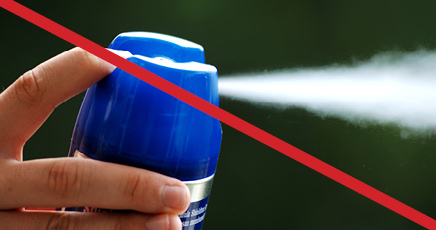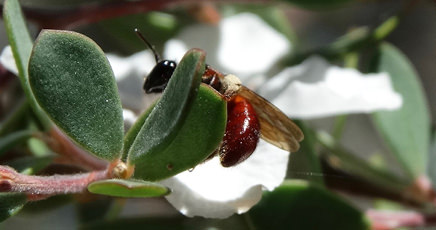STORY
Suyin had a big idea for the week that grandfather was planning to stay with them. She asked to invite Tom and a few other friends over for grandfather to teach them how to make homes for the bees. Suyin knew that the urban development across the valley would have removed the spaces where bees nest and find their food. It would be a fun activity to do at the same time as doing something good for the environment. Win-win!
Suyin, Tom and their friends had so much fun constructing many homes for the bees. They made several nests from bundled hollow pithy stems that they collected the week before grandfather’s arrival. Grandfather also made a couple of nests from hardwood boxes. “It is important to hang your nests in a sunny position to attract the best bees, and most importantly hang your nests away from foot traffic. Hang them in places where they can be observed and where there are lots of flowering plants in the area. Sooner or later, the bees will find their new home and come to stay” explained grandfather.

Bees are pollinators. Pollinators help plants reproduce, and as a bonus for people, they help us grow our food and flowers. Australian native bees are also able to pollinate many fruit and vegetable flowers including tomatoes, watermelon, passion fruits, apples, cherries, strawberries and mangoes.
As we clear land for urban development, and for broadacre farming, we remove the spaces where bees nest and find their food. With no food, and nowhere to produce their young, native bee populations are under threat of local extinction. In this activity, we will look at providing nesting spaces for native bees which mimic their natural ones. This will provide them somewhere to produce their offspring.
This learning activity is the first part of a sequence of 2 individual learning activities focused on creating a bee hotel to help support native bee populations. The order of these learning activities are: research and construction.
We encourage our Junior Landcarers to learn more about other pollinators including European honey bees in the Creating a beneficial garden sequence: assessment, investigation and planting.
For children to:
- understand the need to provide additional nesting space for bees
- value the importance of mimicking the bees’ natural habitat
- engage and connect with local experts that may provide assistance
- undertake the task of building and managing a bee hotel for cavity-nesting bees.
Availability and ease of collection of natural materials to create your bee hotel will vary according to seasonal plant life cycles. Collecting materials to use at a later time can be useful to help prepare. Your local Landcare group may be able to help.
Collecting materials and making bee hotels during winter is a good time to prepare for the return of warm weather. This is when bees will start to become active and they will soon start looking for places to nest. Hopefully in your hotel!!
Winter pruning time is also a very good time to start collecting sticks and other materials.
Introduction
Before commencing this activity, the Junior Landcarers are encouraged to develop a better understanding of bees, their features and their native nesting habitat. Learners will apply prior learning and information gathered to identify the things to include in their bee hotel, to best mimic the bees’ natural habitat.
This activity will require adult supervision and some ground work to gather materials. We suggest connecting to your local Landcare group or hardware shop, as they may help provide some of the materials.
*Time allocation is based on all materials being sourced prior to commencing construction.
Checklist
Instructions
Step 1
As a result of completing the research activity, children should have a better understanding of the native bees that we are creating habitat for.
It is important for our learners to understand the importance of this activity, to build ownership that will help achieve the best results.
Step 2
Discuss the materials that you will need for your bee hotel.
Ask the children what materials can be used? What materials do we already have? What materials can’t we use and why? Are tools needed to collect and trim the materials? Do you need a container to hold the materials you have gathered? What additional materials are needed?
Consider reaching out to your local Landcare, bushcare or ‘friends of’ group to help collect materials required.
Being ready with all your materials will save time and achieve the best results.
Step 3
Simple bundled nest
Bundle hollow and pithy stems that are about 15 – 20cm long. Wire them together at each end, ready to hang them in a tree or on a fence.
If you prefer, place your stems in an empty food can or plastic planter pots, ensuring the stems are tight, without any gaps. Tie your wire around the can or the pot tightly at each end, ensuring everything is secured.
Bee hotel nest
Use a small hardwood box of at least 10cm deep. Remember that the larger the box, the more nesting materials you would need to fill it. A 12x12cm diameter is a good size!
Cover one end with plywood or fine mesh to stop materials from falling.
Bees prefer a ‘blunt’ end to the burrow. When drilling, ensure you don’t drill all the way through the wood.
Drill a number of holes in each of untreated ‘rounds’ of wood, ranging from 3mm-8mm. Space the holes around 2cm apart. Try to minimize burrs, to keep tunnels smooth and inviting for the bees.
Place 1-3 pre-drilled, untreated rounds of wood in the box. Add the hollow and pithy stems. Add layers of bark or rotten wood. Pack the box tightly with the materials, so the openings are facing out.
Close the front of the box using wire mesh, using a staple gun or tacks.
Step 4
You may choose to paint the bee hotel boxes before installing to increase their longevity.
Ideally, install your nest in a sunny position to attract the best insects. Hang your hotel at least 0.5m off the ground. The best place to hang the hotel is where the participants can observe them. Don’t put them in a foot traffic thoroughfare, but off to the side, where observers can quietly stand and watch, but aren’t standing in the flight path.
Hang your bee hotel nest with hooks and wire or keep it as a free-standing nest, but not on the ground.
Don’t forget to provide lots of food. So you will need to plant or have lots of flowering plants in the area. Refer to the Creating a beneficial garden: planting learning activity for ideas.
Use the activity sheet to create a sign for your new bee habitat to help people understand more about its importance and the bees that will live there.
Enjoy waiting for your bees to move in, it may take a season to happen!
Extension Activity
Now you have created a bee hotel, encourage others in your community to create them also. Write an article for your local newsletter and share the benefits of looking after native bees in your environment.
Australian Pollinator Week is held every November.
Curriculum and Framework Links
SCIENCE
Year 2: ACSSU030, ACSHE035
Year 3: ACSSU044, ACSIS054
Year 4: ACSHE062, ACSIS064
Year 5: ACSHE083
Year 6: ACSSU094, ACSHE100
Year 7: ACSHE120
Year 8: ACSHE135
HUMANITIES AND SOCIAL SCIENCES
Year 2: ACHASSI042
Year 3: ACHASSI052, ACHASSI059, ACHASSI060
Year 4: ACHASSI080, ACHASSK088, ACHASSK090
Year 5: ACHASSI102, ACHASSK120
Year 6: ACHASSI122, ACHASSI130
DESIGN AND TECHNOLOGIES
Year 2: ACTDEK003
Year 3 & 4: ACTDEP017
Year 5 & 6: ACTDEP019
Year 7 & 8: ACTDEK032
HEALTH AND PHYSICAL EDUCATION
Year 2: ACPPS018, ACPPS022, ACPPS023
Year 3 & 4: ACPPS036, ACPPS040, ACPPS041
Year 5 & 6: ACPPS054, ACPPS059
Year 7 & 8: ACPPS073, ACPPS078
ETHICAL UNDERSTANDING
Exploring values, rights and responsibilities
PERSONAL AND SOCIAL CAPABILITY
Social awareness
CURRICULUM CONNECTIONS
Outdoor Learning
CROSS CURRICULUM PRIORITY
Sustainability
Aboriginal and Torres Strait Islander Histories and Cultures
MY TIME, OUR PLACE: FRAMEWORK FOR SCHOOL AGE CARE
Outcome 2 and 4
Reference List
ONLINE RESOURCES
This Bee Heroes Digibook from ABC Education incorporates video and information on Australian native and European bees.
PRINTABLE RESOURCES
Australian Pollinator Week contains a wealth of useful resources to help understand how to create habitat and look after native bees, this includes the following:
Building a pollinator nest, Planting for native bees , Create a pollinator habitat garden.
Bees Business resources on native bees include: how to make nests for reed bees, a Wood nesting native bees poster, Native bees cavity dwellers poster, and choosing plants to attract native bees.
WATCH
Watch and learn about the large variety of Australian native bees and how using plants and native bee hotels can encourage them to flourish in local environments from ABC’s Gardening Australia. (6 minutes 20)
IMAGE ATTRIBUTION
Regeneration of yellow paper daisies after fire at the Uriara Forest, ACT. Photographer: Carl Davies
Photos of Australian native bees courtesy of Julie Armstrong
We value your feedback
When you have finished this learning activity, please tell us what you think with our survey.
Your feedback will help Landcare Australia improve the activities in the Junior Landcare Learning Centre.
Why not try one of our other Junior Landcare learning activities?
Creating a butterfly garden
Biodiversity
Love Letters to the Land
Biodiversity|First Nations Perspectives|Food Production|Waste Management
Creating a sensory garden
Biodiversity
Understanding weeds: life cycle
Biodiversity


